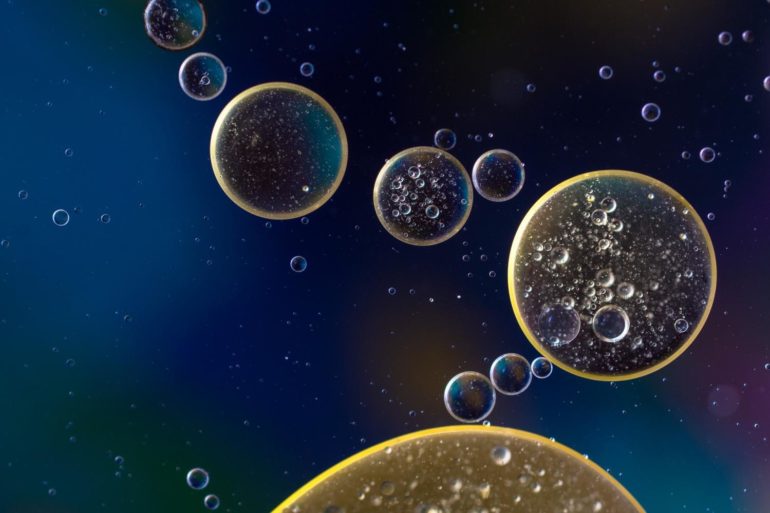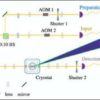For a tiny embryo to develop into an adult organism, its cells must develop in precise patterns and interact with their neighbors in carefully orchestrated ways. To create complex tissues and organs—from the pattern of rods and cones in the retina to the Byzantine filtration systems of the kidney—all these developing cells must constantly answer a fundamental but surprisingly difficult question: Where am I?
“In the field of regenerative medicine, we can use stem cells to make organoids to study disease, but we can’t yet put them into a person and have them repair a wound or heal sick tissue. A big part of that is that we don’t have right signals to tell the cells where to go and what to do when they get there,” said synthetic biologist Wendell Lim, Ph.D., Byers Distinguished Professor and chair of the UCSF Department of Molecular and Cellular Pharmacology.
One of the ways cells in developing organisms keep track of where they are and what they are supposed to be doing is through a type of chemical signal called a morphogen. These signals are produced by so-called organizer cells and diffuse outward through the local tissue. As the signal diffuses its concentration fades, telling local cells exactly how far they are from the source. With multiple organizer cells churning out different morphogens from key locations in a growing organism, cells can create a 3-D spatial map that guides their development into complex tissues, much like a cellular GPS coordinate system.
Scientists are still working to understand how morphogens’ signals are broadcast over just the right distances and how cells are calibrated to respond to the proper concentration at the appropriate time. But these questions are difficult to investigate because natural morphogens interact with their environment in many complex, hard to define ways.
Instead of deconstructing morphogens one interaction at a time, Lim’s synthetic biology team at UCSF and a pair of research groups at the Francis Crick Institute in London—led by Guillaume Salbreux, Ph.D., and Jean-Paul Vincent, Ph.D. (himself once a post-doc with UCSF’s Patrick O’Farrell, Ph.D.)—independently took the innovative approach of engineering a synthetic morphogen from the ground up. Their goals, as reported in two papers published October 16, 2020, in Science, were to study what makes morphogens work, and perhaps one day to create synthetic signals that could help control tissue regeneration or guide cellular therapies to heal wounds or fight cancers.
Lim’s team, led by postdoctoral fellow Satoshi Toda, Ph.D., now an assistant professor at Kanazawa University’s Nano Life Science Institute in Japan, started with an inert molecule called GFP, to which cells are normally completely deaf. To give cells the ability to respond to this new signal, the researchers used special types of antibodies to create GFP-responsive receptors. They genetically inserted these receptors into cells in laboratory dishes and linked them up to a cellular control system called SynNotch, which the lab had previously developed.
When the researchers instructed a subset of organizer cells at one end of the dish to produce GFP, the clouds of the fluorescent protein diffusing away from these anointed organizers activated the engineered receptors and imparted patterned gene activity in surrounding cells.
“I think it’s pretty striking that a crude morphogen is not very hard to make,” Lim said. “It gives us a sense of how simpler signaling molecules might have evolved to become morphogens in early days of multicellular evolution.”
At UCSF, the researchers showed that these engineered morphogens could direct the formation of novel, user-defined striped patterns. At the Crick Institute, scientists used a similar approach in living flies—showing that engineered morphogens could take the place of natural signals in successfully organizing the intricate patterns of the fly wing.
Because all the interactions in these systems are engineered, their characteristics are known and therefore amenable to mathematical modeling, the researchers say. These studies open the way to a testable theory of pattern formation by morphogens, and one day could help scientists program cells like robots to follow molecular trails to find and regenerate injured or diseased tissues.
Key control mechanism allows cells to form tissues and anatomical structures in the developing embryo
More information:
Satoshi Toda et al, Engineering synthetic morphogen systems that can program multicellular patterning, Science 16 Oct 2020: Vol. 370, Issue 6514, pp. 327-331. DOI: 10.1126/science.abc0033
Provided by
University of California, San Francisco
Citation:
Engineered developmental signals could illuminate regenerative medicine (2020, October 15)
retrieved 16 October 2020
from https://phys.org/news/2020-10-developmental-illuminate-regenerative-medicine.html
This document is subject to copyright. Apart from any fair dealing for the purpose of private study or research, no
part may be reproduced without the written permission. The content is provided for information purposes only.



